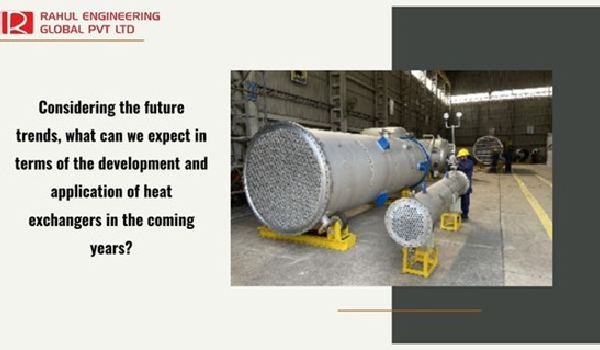
In the ever-evolving landscape of industrial technologies, one element that stands out as a cornerstone of efficiency is the humble yet powerful heat exchanger. As we peer into the future, it's fascinating to unravel the potential trends that will shape the development and application of heat exchangers in the coming years.
What is a Heat Exchanger?
At its core, a heat exchangers is a device designed to transfer heat between two or more fluids. This process finds applications in various industries, from heating and ventilation to power generation and beyond.
Key Benefits of Heat Exchangers:
1. Energy Efficiency: Heat exchangers play a pivotal role in optimizing energy usage, ensuring that heat is transferred with minimal waste.
2. Cost Savings: By improving energy efficiency, heat exchangers contribute to significant cost savings in operations.
3. Environmental Friendliness: The ability to manage and control heat transfer contributes to eco-friendly practices by reducing overall energy consumption.
Advantages of Heat Exchangers:
1. Versatility: Heat exchangers are adaptable and find applications in diverse industries, showcasing their versatility.
2. Temperature Control: Precise temperature control is achievable, allowing for efficient thermal management in various processes.
3. Reduced Equipment Size: Modern heat exchangers often allow for compact designs, saving valuable space in industrial settings.
How Do Heat Exchangers Work?
The fundamental principle involves the exchange of heat between two fluids without them coming into direct contact. This can be achieved through various mechanisms such as conduction, convection, and radiation.
Features of Heat Exchangers:
1. Materials: Advances in materials science contribute to improved heat transfer efficiency and durability.
2. Smart Integration: The incorporation of smart technologies enables real-time monitoring and adaptive control, enhancing overall performance.
3. Modularity: Many heat exchangers are designed with modular components, allowing for easier maintenance and upgrades.
Future Trends in Heat Exchanger Development:
1. Nanotechnology Integration: Expect to see advancements in nanomaterials enhancing heat transfer rates and efficiency.
2. Digital Twins: The utilization of digital twin technology for predictive maintenance and performance optimization.
3. Green Technology Focus: Continued efforts to align heat exchangers with sustainable and environmentally friendly practices.
Conclusion:
As we venture into the future, the trajectory of heat exchanger development promises a more efficient, sustainable, and technologically advanced landscape. From the integration of smart features to the exploration of nanotechnology, the evolution of heat exchangers is poised to play a pivotal role in shaping the industries of tomorrow. Embrace the heat, for it is the warmth of progress.
"Revolutionizing Thermal Efficiency: Unleash the Power of Heat Exchangers with REGPL-Rahul Engineering Global Pvt. Ltd. Elevate Your Processes, Enhance Your Performance. Your Solutions, Our Expertise – Feel Free to Contact Us for Precision and Reliability. Explore Possibilities at REGPL.com! "
